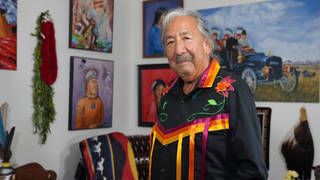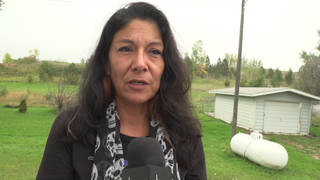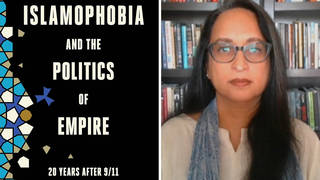
Six months after questioning former Army biological weapons scientist Steven Hatfill, the FBI finally searched his Maryland apartment last week. They were looking for evidence about the anthrax-laced letters that killed five people last fall.
Also last week, Barbara Hatch Rosenberg of the Federation of American Scientists criticized the FBI at a Senate briefing. She says they have failed to aggressively pursue a “likely suspect.” Rosenberg didn’t mention Hatfill by name, but her description closely resembles him.
Steven Hatfill attended medical school in Zimbabwe (then called Rhodesia) in the late seventies, during the largest ever known outbreak of anthrax. It infected more than 10,000 black farmers. According to the New York Times, there’s evidence the anthrax was released by the white Rhodesian army, fighting against black guerillas. And Hatfill’s résumé also claims involvement in the former South African Defense Force, and some of his colleagues told a reporter for the American Prospect boasted that he worked as a double agent in South Africa.
In the 1990s, Hatfill worked at the U.S. Army Medical Research Institute of Infectious Diseases at Fort Detrich, Maryland–the military’s top bioterrorism research facility. According to the American Prospect and other publications, Hatfill is closely connected to biological weapons training programs run by the CIA. Several years ago, he commissioned a study of a hypothetical terrorist attack in which anthrax is sent through the mail. The FBI insists Hatfill isn’t a suspect.
Last fall’s letters were laced with what’s known as the Ames strain of anthrax. The Ames strain has been distributed to about 20 U.S labs since 1981. Only four facilities are believed to have the ability to produce the highly lethal, dry powder form the letters contained. The Fort Detrich bioweapons lab where Hatfill worked is one of those facilities.
Instead of beginning with a narrow investigation of these four labs, the FBI cast a wide net, looking as far a field as Iraq and Russia. The F.B.I. waited until December to open the intact anthrax envelope it found. And it didn’t obtain anthrax strains from various labs for comparison until March, and the testing is still not complete.
In writing about a so-called “Mr Z” (whose resume closely resembles Hatfill’s) New York Times columnist Nicholas Kristof writes “If Mr. Z were an Arab national, he would have been imprisoned long ago. But he is a true-blue American with close ties to the U.S. Defense Department, the C.I.A. and the American biodefense program.”
Guests:
- Meryl Nass, anthrax expert, physician and writer. Nass identified the 1979 anthrax outbreak in Zimbabwe (then Rhodesia) as bio-terrorism. It was the largest outbreak of human anthrax in history. She developed a model for analyzing epidemics to assess whether they are natural or man-made.
- Scott Shane, reporter with the Baltimore Sun who has been covering anthrax for the paper since the first anthrax death October 4.
Related links:











Media Options